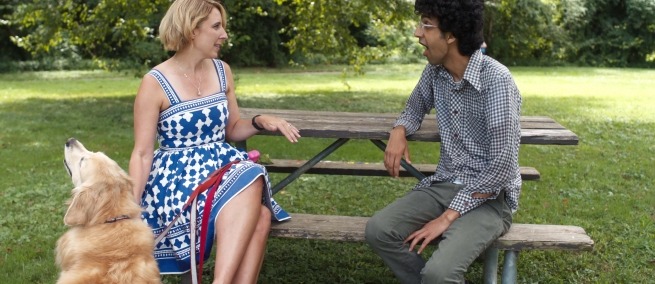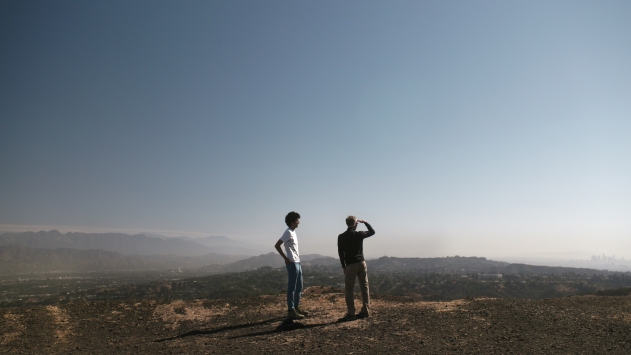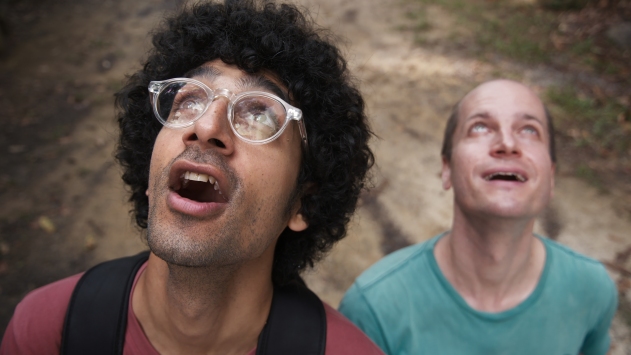
Netflix’s new six-part documentary series CONNECTED: THE HIDDEN SCIENCE OF EVERYTHING focuses on universal topics—from poop to clouds—and unpacks how the science of them connects us all. CONNECTED is hosted by Latif Nasser, who is also Director of Research for the award-winning New York Public Radio Show Radiolab. We spoke with Latif about storytelling in each of these formats and the ideas behind CONNECTED.
Science & Film: How do you think about crafting a story for radio versus for television?
Latif Nasser: In terms of the process, this sounds so obvious, but I promise you it was not to me: I had this idea that when you see a television host walking through a desert and they’re alone, I just through they were alone—it didn’t occur to me that they were not alone [laughs]. They’re not alone! It’s not just a cameraperson, it’s a director, producer, security person... You have to travel with cooks and reporters and the gear. This enormous team coming to watch one person walk in the desert, it’s funny and kind of absurd. What you also realize is that it’s a totally different ball game in terms of reporting.
At Radiolab we have this saying: Tape is cheap. You can talk in a studio with one person for hours and it’s basically nothing—especially now if it’s over Zoom and you’re calling someone at their house. Whereas, you could quantify how much money per minute it costs to do these interviews for CONNECTED. It turns out that changes the dynamics completely. I do 90-minute interviews for Radiolab and the point is [for the guest] to almost forget that they’re talking into a microphone. It’s the exact opposite for TV where not only is there a microphone, there’s also a camera, so that makes them hyper self-aware. And you tend to know generally what they’re going to say ahead of time because you have to, because it costs so much to talk to that person in the first place. Process-wise the economics, logistics, and self-awareness of it are so different than in radio.

Photo courtesy of Netflix
S&F: Was a lot of the work for each episode done in pre-production?
LN: We did so much work in pre-production. We had six episodes with about six stories [each] so had approximately 36 locations. We had three camera crews and three director/producer teams zipping around the world, then I was flying redeye after redeye to meet them. Because of all that, so many of the plans we laid would fall through. The logistics of the show were a seven-dimensional puzzle.
S&F: Radiolab’s approach to storytelling is similar to CONNECTED’s approach in that they both zoom out on a subject and then in, but CONNNECTED is also zooming around. Were there stories that you were particularly excited to tell in a format that is visual?
LN: There are definitely stories that people advised me not to do which I did [laughs]. For example: Benford’s Law, which is in a math episode, people were like, that’s not a visual thing that you can put a camera on. Similarly, dust. In terms of a visually striking protagonist, this is the dead dull opposite of something compelling to watch on screen. I think I made mistakes in that way, but I feel like we managed to pull it off.
The answer to your question should be, there are some things that are just more visual than others. The premise of the show—here’s a thing that connects all of us that I can take six bites at from different angles with different experts, that idea—it ended up being tricky. Once we started finding those things like dust or math, now that I know [we can do it], I feel like it’s empowering. It makes me want to do stories about things that are even more impossible.
S&F: Could you articulate why you chose to center the show in this idea of connection?
LN: The production company approached me with the idea of a hosted science show where we go Anthony Bourdain-style to different places. I thought, these experiments are interesting but they’re going to feel so far away, so how do we connect it back to the viewer at home, to make it feel like you’re not just watching some random experiment but about this thing that’s woven into your life? [I wanted to capture] that feeling of everything is connected, we are each connected to one another, the world is connected to our lives, we are each connected to the world in these subtle, surprising ways. There is an old BBC show called CONNECTIONS that I love, that this was in part an homage to.

Latif Nasser in CONNECTED. Photo courtesy of Netflix.
Politically and spiritually it feels like the world is in this place where there is a lot of division. The truism “everything is connected,” it felt like everybody needed a reminder that we’re all in this together. This was before COVID! We’re all going to live or die together. We can’t build walls between us. All these things we’re using as a pretext to divide, we’re just kidding ourselves; not only is it built into the fundamental nature of life that we’re all connected, but that’s our key to survival—without it that’s it, turn the lights off.
♦
CONNECTED: THE HIDDEN SCIENCE OF EVERYTHING is available to watch on Netflix.
TOPICS